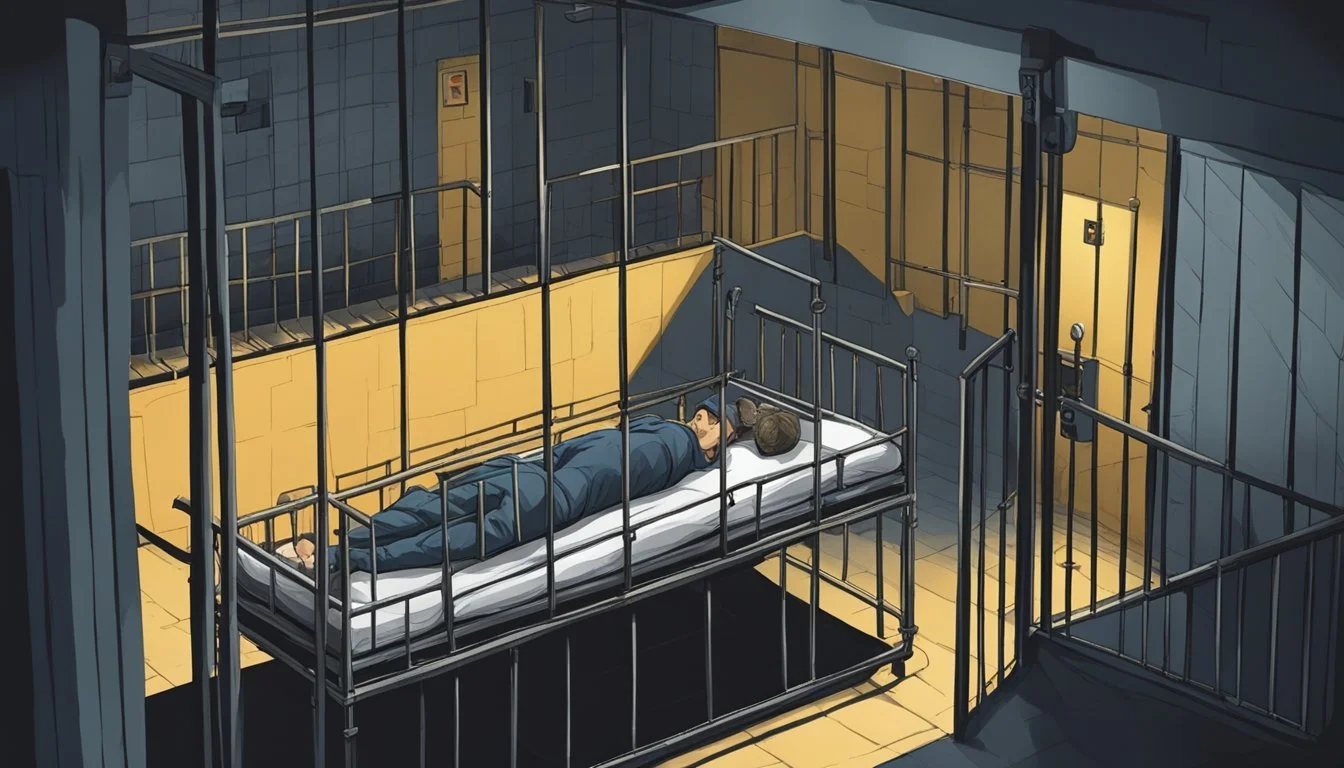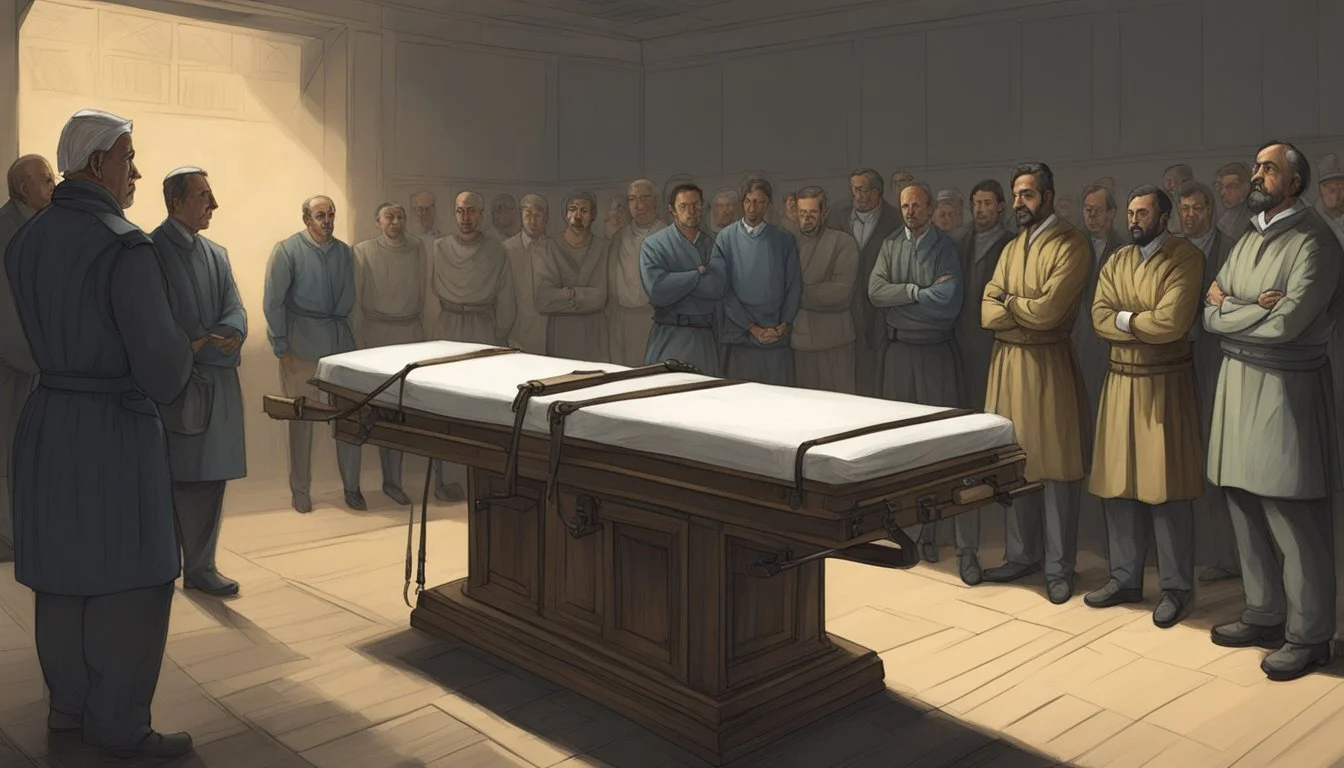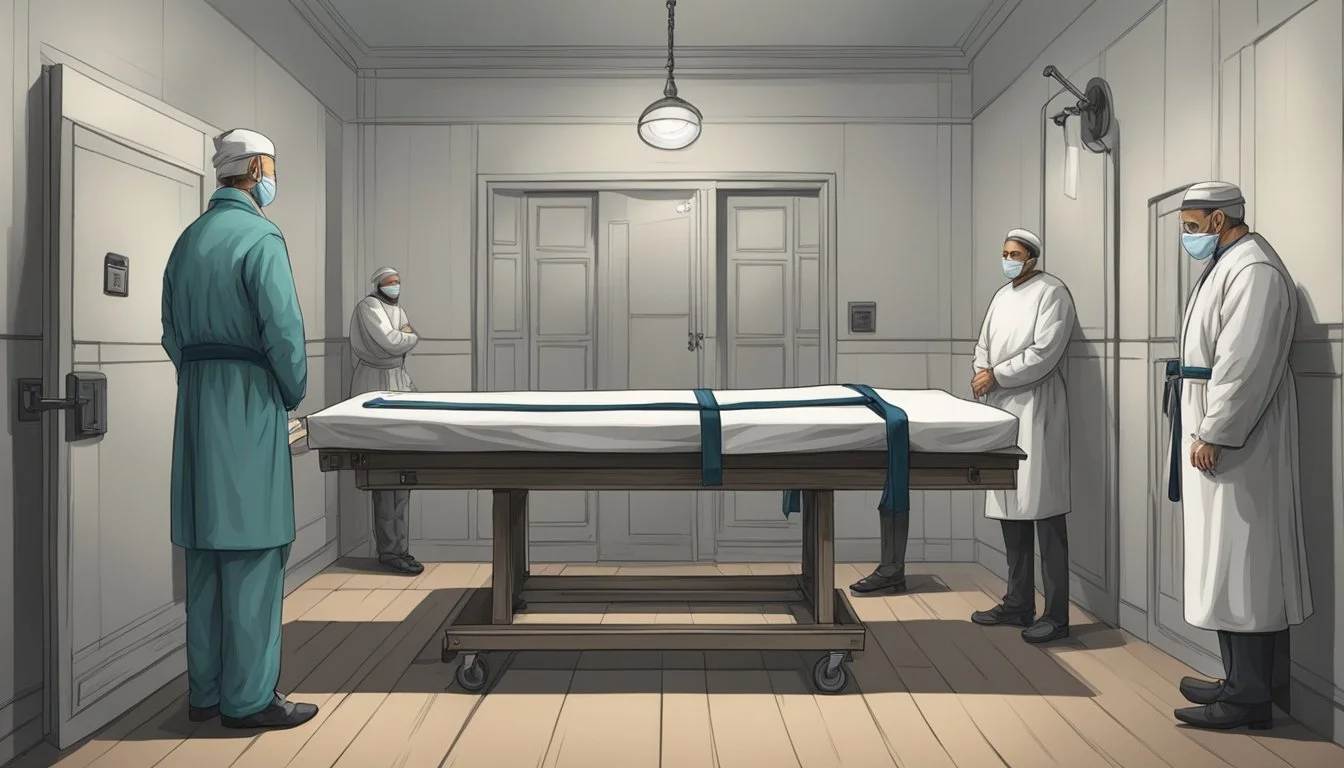Tommy Lynn Sells' Coast-to-Coast Conclusion: Drifter's Death by Lethal Injection Ends Serial Killer's Reign of Terror
Tommy Lynn Sells, known as the "Coast-to-Coast Killer," left a trail of terror across the United States from the 1980s to 1999. His reign of violence ended on December 31, 1999, when he was arrested for the brutal murder of 13-year-old Kaylene Harris in Del Rio, Texas. Sells was convicted of capital murder and sentenced to death, culminating in his execution by lethal injection on April 3, 2014, at the Huntsville Unit in Texas.
Sells' criminal career spanned multiple states, with authorities believing he committed at least 22 murders. The drifter claimed to have killed over 70 people during his lifetime, though the exact number remains uncertain. His victims ranged in age and background, reflecting the random nature of his crimes as he moved across the country.
The execution of Tommy Lynn Sells marked the end of a dark chapter in American criminal history. His case highlighted the challenges law enforcement faced in tracking serial killers who crossed state lines and the importance of inter-agency cooperation in solving complex cases.
Profile of Tommy Lynn Sells
Tommy Lynn Sells was an American serial killer who claimed to have committed over 70 murders across the United States. His transient lifestyle and violent crimes earned him the nickname "Coast to Coast Killer."
Early Life and Onset of Crime
Born on June 28, 1964, Sells had a troubled upbringing. He dropped out of school in eighth grade and began abusing substances at a young age. Diagnosed with bipolar disorder, Sells struggled with mental health issues throughout his life.
His criminal activities started early. As a teenager, Sells engaged in theft and public intoxication. He adopted a transient lifestyle, hitchhiking across the country and committing various offenses.
Sells' first arrest came for marijuana possession. This marked the beginning of a pattern of run-ins with law enforcement, though many of his most serious crimes went undetected for years.
Path to Murder
Sells claimed his first murder occurred in 1985 when he was 21 years old. This initiated a spree of killings that spanned over a decade.
His victims varied in age and gender. Sells targeted vulnerable individuals, often gaining their trust before attacking. He used different methods to kill, including strangulation, stabbing, and beating.
Sells' transient lifestyle made it difficult for authorities to connect his crimes. He moved frequently, crossing state lines and evading capture.
In 1999, Sells committed the murder that led to his capture. He killed 13-year-old Kaylene Harris in Texas. This crime ultimately resulted in his arrest, conviction, and death sentence.
Crimes and Victims
Tommy Lynn Sells committed numerous brutal murders across the United States, targeting both adults and children. His violent acts spanned multiple states and left a trail of devastation in their wake.
Notorious Murders
Sells gained infamy for several high-profile killings. In 1999, he broke into a Del Rio, Texas home, murdering 13-year-old Kaylene Harris and severely injuring 10-year-old Krystal Surles by slashing her throat. Surles survived and helped identify Sells. In 1997, Sells stabbed 10-year-old Joel Kirkpatrick to death in Lawrenceville, Illinois. Julie Rea, Joel's mother, was initially convicted of the murder but later exonerated.
Sells also confessed to the 1999 murder of 9-year-old Mary Bea Perez in San Antonio, Texas. He abducted her from a local fiesta, later disposing of her body in a creek.
Innocent Lives Taken
Sells' victims ranged from young children to adults across multiple states. He admitted to murders in California, Texas, Wyoming, Missouri, and Arkansas. His methods varied but often involved stabbing or other brutal attacks.
In one case, Sells claimed to have killed a family in Wyoming, including a young girl. He also confessed to murdering a mother and her 4-year-old son in Springfield, Missouri. The true extent of Sells' crimes remains unknown, as he claimed to have killed up to 70 people during his cross-country spree.
Capture and Legal Proceedings
Tommy Lynn Sells' reign of terror came to an end with his arrest on January 2, 2000. Law enforcement's investigation led to a swift trial and death sentence for the notorious killer.
Initial Arrest and Investigation
On December 31, 1999, Sells broke into a home in Del Rio, Texas, attacking two young girls. One victim died, but 10-year-old Krystal Surles survived and provided a description of the assailant. This crucial testimony led to Sells' arrest on January 2, 2000.
Law enforcement quickly linked Sells to other unsolved crimes across multiple states. During interrogations, he confessed to numerous murders, though the exact count remained unclear. Investigators worked tirelessly to corroborate his claims and connect him to cold cases.
The Del Rio crime scene yielded important physical evidence, including DNA and fingerprints, strengthening the case against Sells.
Trial and Sentencing
Sells faced trial in Texas for the Del Rio murder. Prosecutors presented a compelling case, including Krystal Surles' eyewitness testimony and forensic evidence. The jury found Sells guilty of capital murder.
During the sentencing phase, the prosecution detailed Sells' long history of violence. His confessions to multiple murders across the country painted a picture of a remorseless killer.
The jury deliberated briefly before sentencing Sells to death. He received additional life sentences for other crimes in Texas and Missouri.
Sells spent over a decade on death row, exhausting his appeals. On April 3, 2014, he was executed by lethal injection at the Huntsville Unit in Texas, bringing an end to the saga of the "Coast-to-Coast Killer."
Conclusion of Criminality
Tommy Lynn Sells' reign of terror ended with his execution in Texas. His final days and the aftermath of his crimes left lasting impacts on victims' families and the criminal justice system.
Final Days and Execution
Tommy Lynn Sells spent his last years on death row at the Texas State Penitentiary. On April 3, 2014, at age 49, Sells was executed by lethal injection at the Walls Unit in Huntsville, Texas. He declined a last meal.
The execution used pentobarbital, a controversial drug due to supply issues. Texas refused to disclose its supplier, prompting legal challenges. The U.S. Supreme Court rejected a final appeal, allowing the execution to proceed.
Sells made no final statement expressing remorse for his crimes. The lethal injection was administered at 6:27 p.m., and he was pronounced dead at 6:35 p.m.
Aftermath and Impacts
Sells' execution brought closure for some victims' families, including the Harris family. Katy Harris' murder had led to Sells' death sentence in Val Verde County.
His crimes spurred changes in the criminal justice system. Texas implemented stricter protocols for handling unidentified DNA evidence found at crime scenes.
Sells' case highlighted issues with tracking transient offenders across state lines. This led to improved information sharing between law enforcement agencies nationwide.
Author Diane Fanning wrote a book about Sells, and documentaries explored his crimes. These works aimed to understand his motives and prevent similar cases.
The debate over capital punishment continued, with Sells' execution used as an argument both for and against the death penalty.
Discussing the Death Penalty
The death penalty for Tommy Lynn Sells sparked debates about capital punishment's ethics, legality, and implementation. Questions arose regarding execution methods, appeals processes, and constitutional rights.
Ethical and Legal Debates
Death penalty opponents argued that execution is cruel and unusual punishment, violating the Eighth Amendment. They pointed to issues with lethal injection drugs and botched executions. Supporters countered that Sells' crimes warranted the ultimate punishment.
Appeals focused on claims of ineffective counsel and lack of transparency in the trial process. Sells' lawyers raised concerns about access to evidence and witness testimony.
Execution drug shortages led Texas to modify its lethal injection protocol. This change faced legal challenges regarding potential pain and suffering.
Questions emerged about the fairness of Sells' trial and sentencing. Some argued he did not receive adequate representation due to his low-income background.
The case highlighted ongoing debates about capital punishment's place in the justice system. It raised issues of deterrence, retribution, and the possibility of wrongful executions.
Sells in Popular Culture
Tommy Lynn Sells, known as the "Coast-to-Coast Killer," has been featured in various media portrayals since his capture and execution.
Several true crime documentaries have explored Sells' life and crimes. These productions aim to shed light on his troubled past and the trail of violence he left across the United States.
True crime author Diane Fanning wrote a book titled "Through the Window: The Terrifying True Story of Cross-Country Killer Tommy Lynn Sells." This work delves into Sells' background and criminal activities.
Television shows have also covered Sells' case. Episodes of "Forensic Files" and "American Justice" have examined the evidence and investigative techniques that led to his capture.
Sells' story has been featured in podcasts and online articles, contributing to ongoing discussions about serial killers and the criminal justice system.
Some media portrayals have sparked debates about the ethics of sensationalizing violent criminals. Critics argue that such coverage may inadvertently glorify their actions.
Despite the attention, efforts have been made to focus on the victims and their families, ensuring their stories are not overshadowed by Sells' notoriety.





